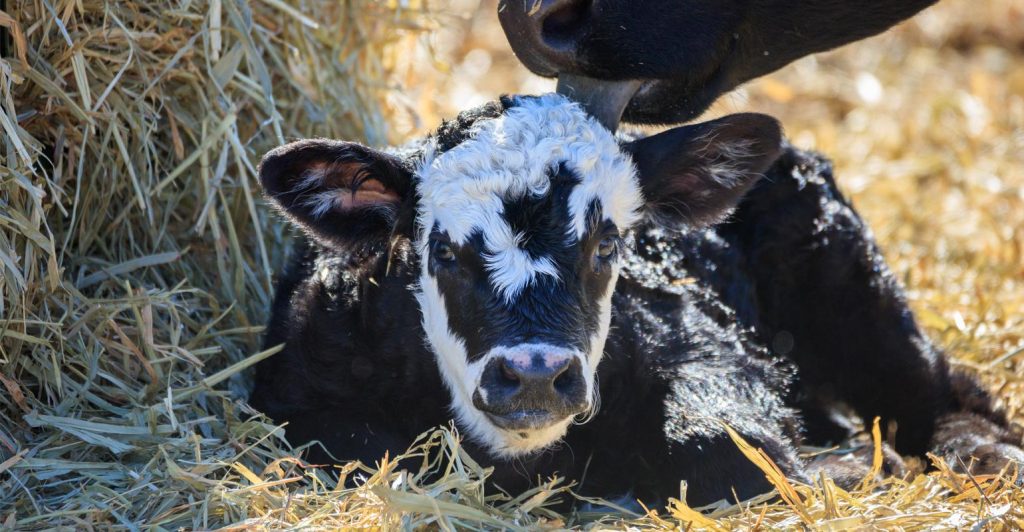
Mark Johnson, Oklahoma State University Extension Beef Cattle Breeding Specialist, offers herd health advice as part of the weekly series known as the “Cow Calf Corner” published electronically by Dr. Peel, Mark Johnson, and Paul Beck. Today, Johnson is talking about the value of colostrum.
Being ready and prepared before the start of calving season can make life much easier for cow-calf producers and potentially save a calf. By the time calving season starts, you need everything on hand that might be necessary and all equipment and facilities in working order. Operators should have several doses of colostrum or colostrum replacer on inventory before the start of calving season.
Adequate colostrum intake is extremely crucial for newborn calves in order to gain passive immunity. Calves born after a prolonged delivery through the pelvic canal can suffer from severe respiratory acidosis. Such calves are less efficient at absorbing colostral immunoglobulins or antibodies even if artificially fed colostrum. The only disease protection baby calves will receive is from the passive transfer of antibodies from the colostrum they ingest. Colostrum also contains transferrin and lactoferrin, which bind iron and restrict bacterial growth. These factors, together with immunoglobulins, help limit growth of bacteria in the gut.
Colostrum or colostrum replacer will need to be administered by bottle suckling or tube feeding within a few hours of birth for maximal absorption of immunoglobulins. The general rule of thumb is the sooner colostrum is ingested the better and calves will typically stand, walk and nurse within one hour after birth. Bottomline: if there is any question of if a calf has received adequate colostrum, then colostrum should be administered immediately to the newborn. Calves that miss getting timely colostrum ingestion are much more likely to suffer from calf scours, which can have lifelong effects on general hardiness and disease resistance.
Previously obtained colostrum must be kept frozen to protect the integrity of the large protein molecules that make up the various immunoglobulins. Fresh colostrum can be stored in one-quart doses by putting that much in a gallon-size Ziploc bag. Lay the bags flat to freeze in the freezer. When the time comes to thaw the colostrum and feed it to the newborn calf, the “best practice” is to thaw in a warm water bath at 122 degrees Fahrenheit for one hour. Avoid thawing at room temperature of in a microwave oven.
The amount of immunoglobulin ingested is a major factor in final blood immunoglobulin concentration and disease protection. A practical rule-of-thumb is to feed 5% to 6% of the calf’s body weight within the first six hours and repeat the feeding when the calf is about 12 hours old. For an 80-pound calf, this will equate to about 2 quarts of colostrum per feeding.
Commercial colostrum replacers contain more than 100 grams of immunoglobulin per dose. Always read the label before purchasing. It is important not to confuse supplements and replacers. Supplements are used to boost antibody protection a calf gets from nursing and contain 40 to 60 grams of immunoglobulins, which is not enough to provide protection in a calf that has not nursed.
Below, Mark Johnson, OSU Extension beef cattle breeding specialist, provides management tips for calving during the winter and ways to successfully give colostrum to newborn calves on OSU SunUpTV from January 8, 2022.















